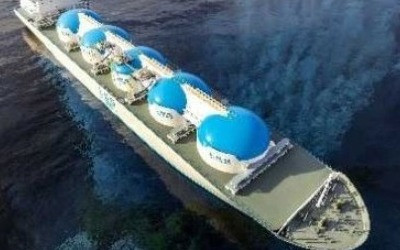January 19, 2021

The oil, gas and energy sector has faced numerous challenges over the years. With the economy experiencing highs and lows, many businesses have been forced to adapt to the changes to remain competitive in a challenging market. COVID-19 has only made things more difficult for the sector, but today, technology is helping revive energy companies in the face of so much uncertainty. The sector has been showing signs of a digital transformation, with many oil, gas and energy leaders appointing Chief Digital officers to help with the adoption process. From big data to artificial intelligence, digital technology is emerging as a major driver in the industry – and now is the time for companies to refine their budgets and implement digitisation to pave the way for a more sustainable future.
Automation
Digitisation has the potential to address a wide range of issues in the energy sector, and improve efficiency. Automation technology has been playing a key role in the industry, and it has the potential to create a wealth of opportunities, such as reducing costs and improving safety. With automation, oil companies can monitor pipeline networks remotely and detect any problems much more efficiently.
There’s a range of automation systems already being used today, including RealSens, a product range used in drones and robots. Drones have become the most economical method for inspecting network pipelines, and many energy providers are using the technology in their operations. Major oil company BP was one of the first adopters of drones, and the organisation now deploys unmanned aerial vehicles and other technologies, which are used to undertake dangerous tasks in operational areas. ConocoPhillips is also using drones and according to NS Energy business, the company have reduced their task completion time by 75%.
Drones are also already being used to mitigate oil spill incidents, which have a huge impact on pollution. Having drones available can reduce the impact and provide accurate GPS locations of the spills. There’s no doubt that drone and automation technology have huge benefits for the industry. When implemented correctly, automation can drive productivity and reduce the risk for companies.
Cloud computing
According to PWC’s strategy report, cloud computing is one of the major areas of digital technology that has the most potential to transform the sector, because it combines analysis and data. Cloud-based computing allows companies to store their data, which then can be used to make better decisions and identify problems. This data can be used to analyse processes, planning and production methods – and it can reduce costs as companies won’t have to invest in huge systems for their IT teams. One of the major benefits of using cloud computing is that it can reduce the environmental impact. Cloud-based services often use less energy, which is positive for the environment. Researchers have predicted that cloud computing will become even more energy-efficient in the future, but yet one of the biggest areas of improvement revolves around the efficiency of data transport.
The Internet of Things
The Internet of Things has enormous potential to redefine the energy sector. Firstly, IoT devices are hugely beneficial for drilling management and health and safety. With the use of smart devices, energy companies can send alerts well in advance for emergencies. By using IoT devices, companies can protect their workers and create a safer environment. The conditions of oil rig sites are normally hazardous, so IoT devices can provide a detailed analysis of the situation and help workers navigate these sites safely. Furthermore, with the IoT, companies can track the location of supplies, as well as shipments, and remotely address any problems, thereby drastically improving the nature of asset tracking.
Many energy companies are also focusing their efforts on monitoring performance and operations using IoT sensors. These sensors provide real-time notifications in a digital dashboard to alert teams of any issues and to help with decision-making. IoT has increasingly paved the way for digital twins, which are virtual models of physical assets – and they benefit companies by providing 3D reports that predict maintenance issues. This means companies can resolve problems more quickly and manage processes more effectively. Ultimately, IoT allows energy companies to optimise processes and production, and improve the life spans of different equipment.
Cybersecurity
Finally, cybersecurity has been another cornerstone of digital transformation in recent years. It’s also a top priority for professionals in the energy sector. With the rise of remote work and the use of mobile devices, there has been an increasing number of cyber-attacks and threats on many businesses, including those in the energy sector. When it comes to digital initiatives at oil, gas and energy companies, cybersecurity must be considered throughout the entire organisation. Energy companies have a unique value to the economy, which makes them all the more vulnerable to attacks. At Petroplan, we’ve developed a strong database of cyber professionals in the ICS, IT/OT area and we are therefore well-positioned to help our clients find this talent.
Digital technology can help companies in the energy sector remain agile and competitive, and even boost revenue streams due to increased efficiency. With many new technologies in use, the energy sector is certainly changing and becoming more data-driven than ever before.
How can Petroplan help you?
We have more than 40 years’ experience in recruiting the best professionals into the energy sector. We understand the challenges and struggles that many businesses face. That’s why we only source the best candidates for roles and we always remain up to date with the latest changes in the industry. With the oil, gas and energy market currently experiencing a turbulent time, there are always opportunities for skilled professionals to make a real impact. Our team of consultants are well-positioned to provide industry expertise and insights. If you would like to find out more about how we can help you, please contact us to start a conversation.






You can also use your social account to sign in. First you need to:
To connect your social account you must Acknowledge the Terms & Conditions and Privacy Policy